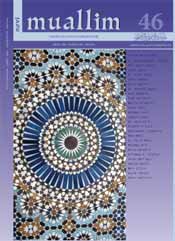KULTURA ODIJEVANJA U BiH NA PRIJELAZU IZ 19. U 20. STOLJEĆE: ULOGA I ZNAčAJ ILUSTRACIJA I PRILOGA U ČASOPISU „NADA“ (1895-1903) U SUSRETU DVA KULTURN
THE DRESSING CODE IN BH BETWEEN 19TH AND 20TH CENTURIES: THE ROLE AND THE SIGNIFICANCE OF ILLUSTRATIONS AND ARTICLES PUBLISHED IN MAGAZINE „NADA”
Author(s): Aida Abadžić HodžićSubject(s): Cultural history
Published by: Rijaset Islamske zajednice u Bosni i Hercegovini
Summary/Abstract: A unique blend and interaction of two cultural identities known as a la Turka and a la Franca, took place in Bosnia and Herzegovina between 19th and 20th centuries. This remarkable and multilayered phenomenon that occurred in the midst of specific historical circumstances on this territory and departure of the old (Ottoman) and arrival of the new (Austro-Hungarian) administration left behind a specific trace in the architecture, urban structure, design, artistry and the code of dressing of the time. Foreign travelogue writers, and painters from Austro-Hungary who visited Bosnia and Herzegovina showed considerable interest in this particular aspect of local culture which was reflected not only at the occasions of grand scale events such as the decor of Bosnian pavilions in international exhibitions (Budapest, 1896; Brussels 1897; Vienna 1898; Paris 1900), but also in everyday life, dressing style and new culture of spending the leisure time. This phenomenon was perceived in various manners, at the same time revealing its complex social, economic, political and cultural background- it ranged from ‘orientalizing’ image of Bosnia and its people to an attempt to having a comprehensive understanding of its autochthonous values and potentials of its tradition. Illustrations and articles brought in ‘Nada’, a magazine for education, leisure and arts published as an illustrated literary review in period between year 1895 to1903 by Austro-Hungarian government in Sarajevo whose first editor in chief was Costa Hörmann, had a particular significance in recording and observing these trends. Articles and illustrations published in magazine ’Nada’ offer interesting, significant and up to now absolutely neglected source of information needed for laying out a broader framework for resolving the problem of a complex social, economic, political and cultural phenomenon of the interaction of two cultural traits a la Turca and a la Franca, which in this time period could be observed in numerous discussions in magazines and daily papers, with a special accent on changes that occurred in dressing style. These debates and discussions have gained new farther reaching dimensions today, in new political and integrational processes.
Journal: Novi Muallim
- Issue Year: 2011
- Issue No: 46
- Page Range: 40-48
- Page Count: 9
- Language: Bosnian

